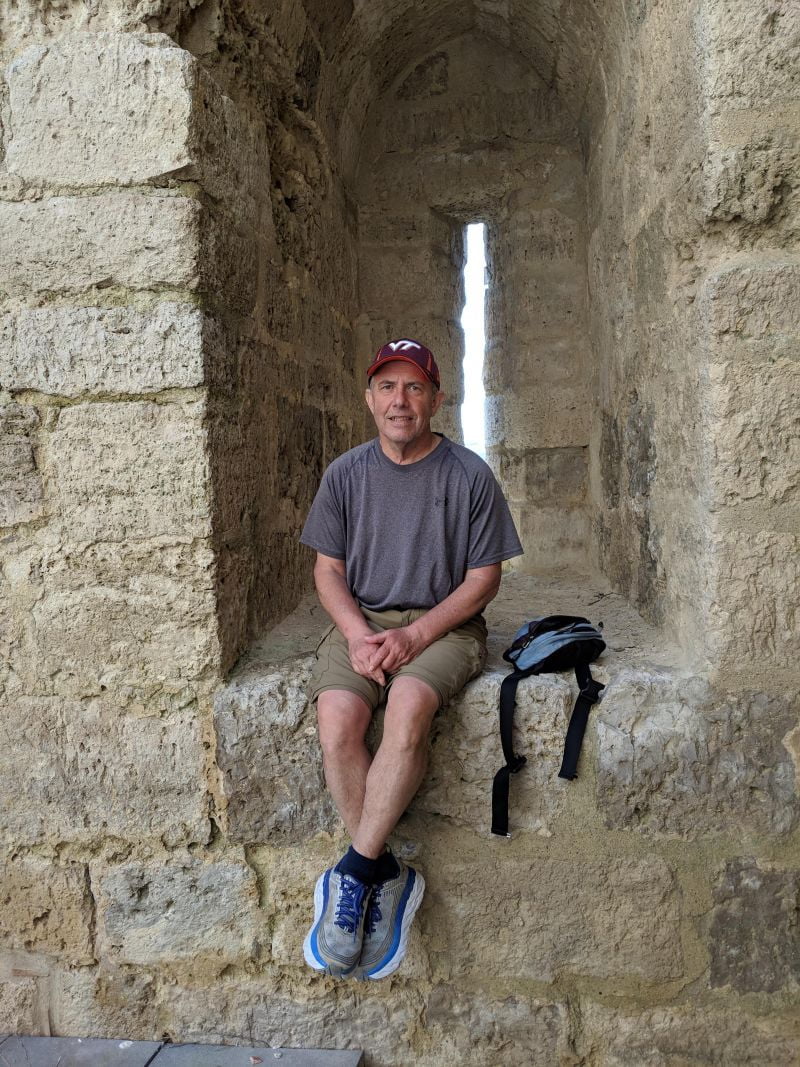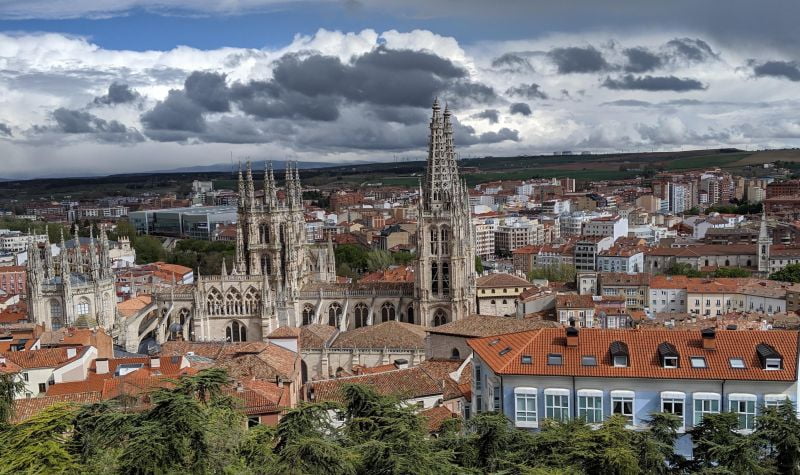Have you missed me? I have missed you. I am in Spain this moment, reporting dutifully from the Camino de Santiago, the famous pilgrimage route across northern Spain.
 You may have heard about it. There was a movie several years ago starring Martin Sheen called The Way, in which he followed this route after the death of his son and its popularity is increasing among Americans.
You may have heard about it. There was a movie several years ago starring Martin Sheen called The Way, in which he followed this route after the death of his son and its popularity is increasing among Americans.
At the cathedral in Santiago is, reputedly, buried the remains of St. James. Religious faithful have been walking this route for over 1,000 years to pay their respects. Imagine in the year 1200 or so, walking from Budapest, or Bucharest, or Berlin, or Brussels, all the way to
Santiago, only pay for their sins at the cathedral, and then turn around and walk back.
In olden days, this was a perilous route, with difficult terrain, unpredictable weather conditions and even bandits along the way. Now, people still come for religious reasons, but many others, like me, come simply for the cultural and physical experience.
It can be said that the reasons for doing the Camino are as numerous and varied as the thousands of people who come each year.
It is an elemental life on the Camino. The peregrinos, those of us on the pilgrimage, wake up in the morning, have a cafe, and begin walking. We walk for two or three hours and then stop and have a late breakfast or lunch. Then we walk a few more hours. Then we check into either a hotel or what is called in albergue which is much like a dormitory. There may be 10, or 20, or even 50 people sharing bunk beds in the same room, always coed. We have a beer and an afternoon snack, we wash our clothes from the day before, and we go to bed early, only to repeat the entire process again the next day.
This trail is around 800 kilometers long, or about 500 miles. It typically takes a walker about 5 weeks to do this, which is the time I have allocated for myself.
I am just over halfway at this point, thinking to myself how strange it will be once this is over and I awake the next morning and have no place to walk.
For most people it is the relationships that are the most memorable. Friends come in and out of our lives with astounding frequency. You meet somebody. you learn about their life and their family and their work and why they are on the Camino. And then, often times, just that quickly, they are gone again, moving further up the trail or perhaps further behind. You may see them again in a few days at another town along the way. And then again, you may never see them at all.
People are here from all over the world. I have met people from Australia, New Zealand, Korea, Hong Kong, Tahiti, the United States, Canada, Brazil, and all over Europe.
English is the most common language among the peregrinos, however, it is helpful to have a working knowledge of Spanish to interact with the local people. I have been studying Spanish and trying to improve my skill as I have continued further. The trail generates a significant amount of tourism revenue, and people walk the trail almost year-round even in frigid winter storms and in brutal summer heat.
On the Camino de Santiago, everyone has scars.
Physical scars.
Emotional scars.
Spiritual scars.
 Last night at our dinner table, there were three peregrinos who had fallen. One had stitches in the bridge of his nose. One had a black eye. One had bruises on her leg and arm. Many have blisters.
Last night at our dinner table, there were three peregrinos who had fallen. One had stitches in the bridge of his nose. One had a black eye. One had bruises on her leg and arm. Many have blisters.
Some peregrinos are in bad relationships. Some are mourning loss. Some are fleeing. All have stories. Elation. Despair. Redemption. Thankfulness. Gratitude.
Because of the shared experience, relationships tend to form very quickly. People seem willing to share intimate details of their lives that are not commonly shared in everyday life.
For example, a few days ago, I was walking with three people: David, a retired truck driver from England who I met the day before, Victoria, a woman in her 50s from Stockholm, Sweden, and Timi, a woman from Budapest in Hungary.
We were sharing life stories with each other. David began to recount a story from early in his career when he drove an ambulance. He spoke about two children who had been killed, one while riding a bicycle that was hit by a car and the other one inside a car that was involved in a crash and the child went through the windshield. As he began to recall these situations, tears formed in his eyes, and before we knew it, he was bawling. His knees were aching and he was not sure that he could continue. He literally stood beside the trail, leaning on a tree, crying his eyes out with three of us, people who, the day before, were mere strangers, listening and consoling. He said, “This happened over 40 years ago and I have never cried about it until today.” And so we cried with him.
Tomorrow I will leave the town where I’m staying tonight, Mansilla de las Mulas, and continue to the city of Leon. And then the city after that, and on and on for at least 14 more days until I reach Santiago.
Everyone is tired.
The march to Santiago continues.
Michael Abraham, typing this piece on his phone from Mansilla de las Mulas, its twelfth century walls, medieval gate and road. They are both a twelve-day walk to the cathedral of Santiago de Campostella on the camino’s French Way. Michael Abraham is a regular contributor to the News Messenger.



